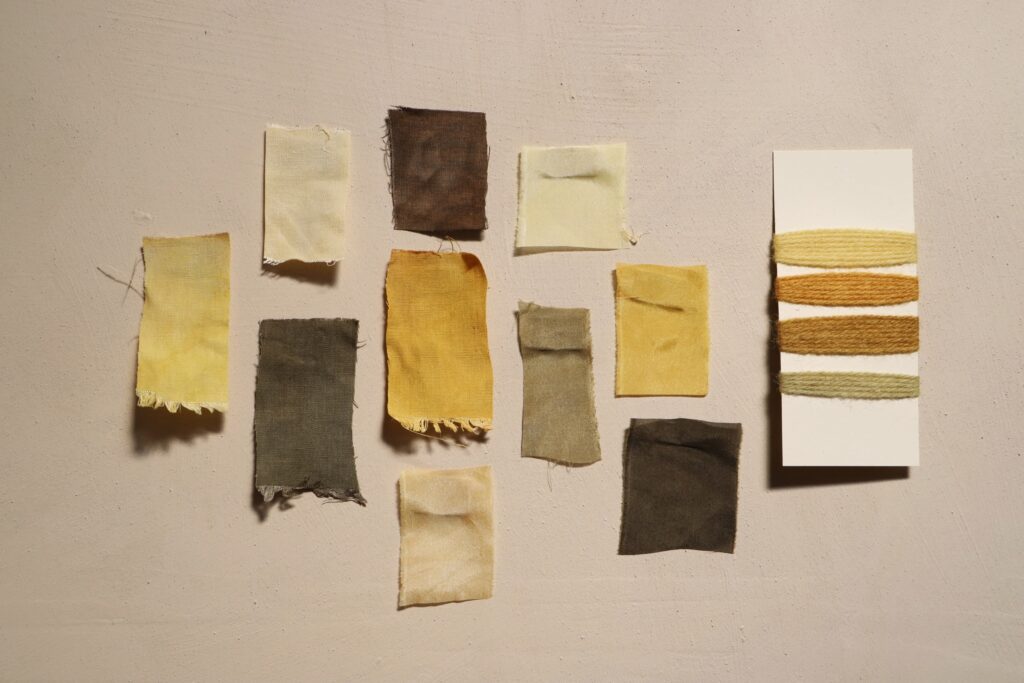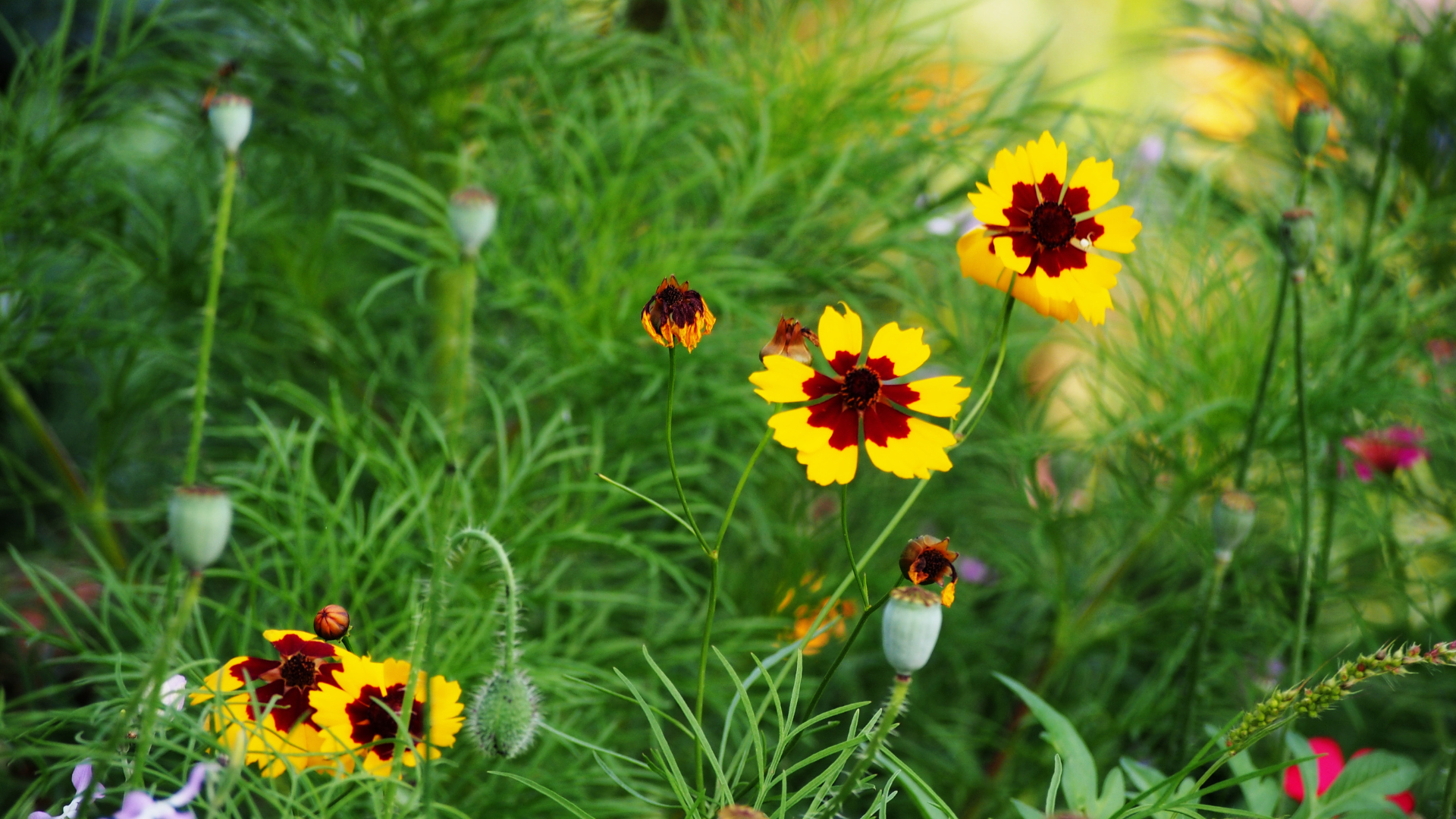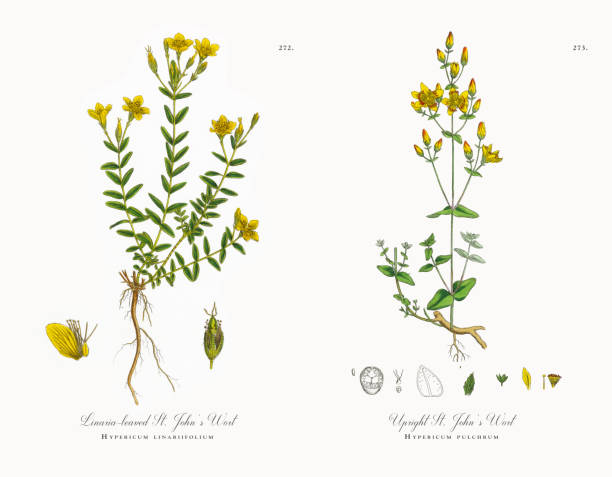
I first did some natural dyeing with Heather while teaching a natural dye retreat in Connemara last September. I was very surprised with the strength of both the dye and the colours on animal fibres. For March’s Colourway, I did some extensive experiments with this woody plant & was left with a renewed appreciation for the native dyes of Ireland. In particular, Heather.

Heather, Calluna Vulgaris
Heather, Calluna vulgaris, is one of our native plants and dye sources, used historically for dyeing across Ireland & Scotland. Along with bracken, Heather covers the Dublin mountains, providing an everchanging backdrop of seasonal colour to a stark and beautiful landscape. They produce a scattering of tiny flowers in pink, purple, red or white and provide a valuable source of nectar for bees & butterflies.

These hardy shrubs thrive in acidic soil and grow wild in heathlands, open woodlands and across our hills. They provide essential habitats for many species & are a common plant in the bogs & morelands of Europe. Managed by grazing sheep or cattle, Heather usually blooms twice a year, once in early summer and again in early Autumn.
Our ancestors used Heather flowers as a mattress filling & as a building material in walls and thatched roofs. The tough stems were used to make household tools, while the flowers and twigs were used for natural dyeing. Medicinally Heather was used to treat a range of common ailments.

Heather as a dye plant
When natural dyeing with Heather, the woody stems and flowers are both sources of natural dye. These can be separated or added to the dye pot together. Most of the Heathers make a yellow dye but the one most commonly used as a dye plant is Calluna vulgaris or ‘Ling’. Ling is an ancient name for Heather taken from the old Norse word “Lyng”.


In traditional dyeing, the tips were gathered just before flowering. Then boiled in water for about 30 minutes to release the dye. Next, the dye was strained & the wool was added, covered and left to soak in the dye overnight.
Historically, Heather was valued as a source of yellow + green dye. It had a vital role in producing the colours of many Scottish tartans & tweeds. Dye baths made from flowers produce shades of rust, orange, yellow and green when modified with iron. Other colours possible are purple, grey, rust and gold.

Natural dyeing with Heather
When working with Heather, the dye is quick to release and you will usually have a good dye to work with after simmering the plant parts for 1 hour. Your fibre will take the dye quite quickly, usually absorbing the colour after only 10 minutes in the dye bath. For the darkest shades, leave the fibres in the dye bath overnight. Heather dye has an affinity for the protein structure of animal fibres and with a high tannin content (which helps the dye bind to fibres), it is an exceptional source of yellow dye.
It’s hard to see from the photos but I achieved rich shades of yellow and a beautiful green when modified with iron. For more on working with Heather & how to get a range of colours consider joining my monthly membership, The colourway.
For anyone interested in natural dyeing, or new to this craft, I would highly recommend doing some simple experiments with this plant. Heather is a great beginner dye to work with due to its natural mordanting properties & the strength of the dye. If you have any questions about dyeing with Heather, please let me know in the comment section below. x Kathryn






I have just run across all your wonderful resources. I am an American on a month long residency this April in Mulranny Ireland and want to experiment with dyeing native plants. I’m so curious about gorse and heather and your information has been incredibly helpful. Thank you for all you do!
Hi Kristen, Apologies for not replying to this sooner. I hope you had a wonderful residency & a great time in Ireland! Thanks for your kind comment. Warmest, Kathryn